In this writing, we’ll look into the background of Proto-Rosicrucian thought and how it lead to a concept of Universal Reformation seeking to unify the realms of the Divine with the Microcosm (the ideal City) and the earthly realm of Nature.
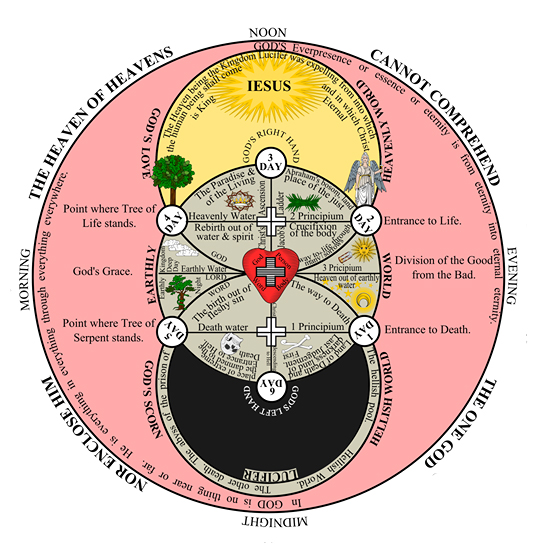
Rosicrucianism, rising at the beginning of the 17th century, until only somewhat recently has had some of its older influences more explored through such integral figures as Traiano Boccalini, Tommaso Campenella and Giordano Bruno. These Proto-Rosicrucians as we’ve seen, provided inspiration for several ideas which would later be associated with Rosicrucianism. Through such works as Boccalini’s The Reformation of the Whole Wide World by Order of Apollo, Campanella’s The City of the Sun and an entire corpus of Hermetic and cosmological work by Bruno —including his Cabala of Pegasus— we might rightfully conclude that although the manifestos were THE call for Universal Reformation in early 17th century Europe, it was also the continuation and promulgation of specific ideas and philosophies having emerged within the context of a Hermetic and Neo-Platonic “reformation” which itself took place during the High Renaissance.
Requisite within the thought of the time, and projected later through the lens of the manifestos, was the core concept a Universal Reformation that would take place on a Threefold Scale. We see this threefold pattern spelled out in the Fama, through the restoring of the dignity of Man [1st Sphere: as physical Nature] as attainable through remembrance of his divine graces by God [2nd Sphere, the Divine], through unity of those who are “learned”, the Society [3rd Sphere, the effect of the City/the Microcosm].
This idea is also present in the Confessio, through expressions of the “brotherhood”:
“Consider you not at length how you might begin with us [1st Sphere: the Brotherhood or Society/Microcosm), not only by pondering the Gifts which are in you [2nd sphere: Man as physical Nature], and by experience which you have in the word of God [3rd sphere: the Divine]…”.
And perhaps most poetically, we can see the idea alluded to in the Chymical Wedding with the contemplation of the Three Temples and the marriage of the Groom [1st Sphere: God, the Divine Father] with the Bride [2nd Sphere: as Nature] taking place across the course of 7 days [3rd Sphere: the passing days of the Planets- the Solar system & the Microcosm].
It is also worth considering that the alchemical romance, here expressed through the allegory of Christian Rozenkruetz, has also often been attributed to the following passage in Revelations: “I John saw the holy city [1st Sphere: City/Microcosm], the New Jerusalem, coming down from God out of heaven [2nd Sphere, Divine] prepared as a bride [3rd Sphere: Nature] adorned for her husband.” (Revelation 21:2).
Overall, when we look comprehensively at these examples, we see in each the threefold schema illustrating a cosmological pattern within a basis of connecting the Divine (God) with Nature through the intermediary of a Microcosm. Below we see how the symbolism is used in correspondence:
The Divine Sphere:
God, the word of God, the Heavens, Wisdom of Sophia, the Form of the Good, Highest Mental Realm, Philosopher-King, Father, Groom, Authority of Apollo, the Divine ‘Minimum’
The Microcosm:
(Idealized) City of the Sun, Christopolis, Utopia, the 7 classical planets or 7 days of the week, (Reflected) the perfect/ethical Society, the “just” Republic, the collective of Man, the Brotherhood, Teaching/Learning, the Mathematical punctum, dispelling ignorance, the 7 liberal Arts and Sciences
Nature:
Physical world, the “lowest” or “final” emanation of God, Earth, the Bride, Man as individual, the “just” Man, Man’s moral character, the fallen or unworked Soul, the Psyche, effects or functions of the 4 elements, the finite punctum, the cave.
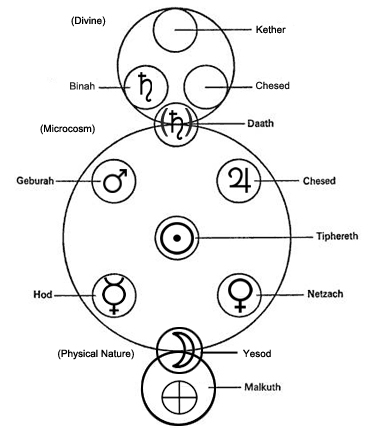
This pattern is a model we will see arise in many instances —extending to the Hermeticists of the earlier Renaissance— as well as even further back to Plato. The Universal Reformation thus overall should not only be thought of as the reformation of Nature and Society for their own ends alone, but to reform these spheres so as to reflect the Divine, to call forth the Divine to descend, to inhabit and establish a union of harmony between the three.
In the Renaissance, the thrust which later gave rise to later such concepts of social and spiritual reformation was most definitely that of Renaissance Humanism and Hermeticism; through figures such as Bruno and Campanella as mentioned earlier, who eventually inherited ideas from such traditions and gave rise to Proto-Rosicrucian thought. We can see it present in the works and ideas of the earlier Florentine Platonic Academy of the 15th century, which included such luminaries as Giovanni Pico Della Mirandola and Marsilio Ficino— that the idea of Reformation was equally (and most emphatically) a union of the Divine and Nature within the structure of a more perfect City or Society. As put forth in his Oration on the Dignity of Man, Giovanni Pico della Mirandola expresses this position with alluring clarity:
“…man is the intermediary between creatures, that he is the familiar of the gods above him as he is the lord of the beings beneath him; that, by the acuteness of his senses, the inquiry of his reason and the light of his intelligence, he is the interpreter of nature, set midway between the timeless unchanging and the flux of time; the living union (as the Persians say), the very marriage hymn of the world, and, by David’s testimony but little lower than the angels.” [1]
Here we are seeing the realm of Man being expressed collectively. The concept of a ‘marriage hymn of the world’ should also not be overlooked, as this of course brings us back to the theme of the Chemical Wedding, as well as to Boccalini’s The Reformation of the Whole Wide World by Order of Apollo which was first published in the late 1500s. It is rather significant here to realize that in Boccalini’s work, which was included and published alongside the earliest versions of the Fama Fraternitatis, that it is the God Apollo, as a Solar figure and the central Axis to the Seven Classical Planets, who is the agent of Reformation, much as the Microcosmic nature of the City of the Sun set forth by Campanella in his treatise of reformation.
Yet furthermore, not only are we considering Apollo as the Solar deity in the sky illuminating the City of the Sun, but as well by virtue of his Divine authority; as the Spiritual Sun. Johann Valentin Andreae would of course add to this theme in his Description of the Republic of Christianopolis of 1619. There, Christ becomes the figure of ascension and light, and thus it is he who becomes the Solar figure governing the City by his Divine authority. Yet again the center of the Microcosm is again reflected within the perfected -or Utopian- Society or City.
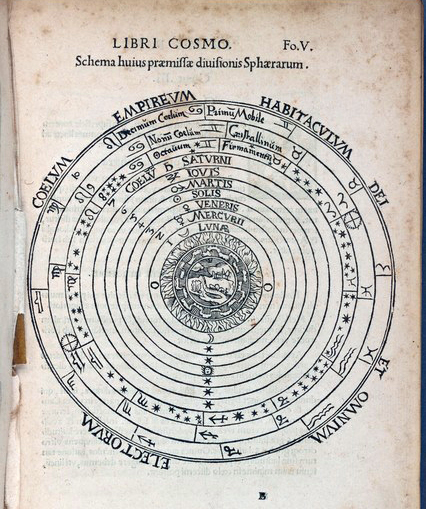
Many of these ideas are those which would eventually spread through Europe by influence of the Italian Renaissance, with particular emphasis in terms of Proto-Rosicruciansim on the Florentine Platonic Academy, that of which was patronized by Cosimo Medici and run by Marisilio Ficino. These ideas had surely been “floating around” Europe in various forms or guises for generations, but with certainty we can point to a major leap in their overall dispersion through the printing press and the fact that Ficino was the first to translate many works by Plato, Hermes Trismegistus, Porphyry, Iamblichus and Plotinus into Latin. As Latin became the universal education of the “learned” throughout Europe, it is without question that these sources became a common entry point for those ideas that would eventually appear in hands in other lands and in other nations.
As a general movement, this period can perhaps be best understood as the era of Renaissance Humanism, itself being the result of several social and pragmatic occurrences culminating in the 14th century. On one level, it was concerned with the ideals of education, those of which partially were inherited from the Medeival scholastic tradition, but which it had also expanded in scope with the inclusion of other disciplines furthering the individual towards ends ultimately considered as being beneficial to society. Starting with the classical Trivium and Quadrivium, and continuing on their theme as the “liberating arts” (the freeing arts), the role of education could expand into a more liberating tradition of the arts and sciences on a personal and social scale.
But addition to the classic works first translated into Latin by Ficino, rediscoveries of classical Latin works by those such as Cicero and Virgil we also made during this time. In Cicero’s Letters, written from the eyes of one having seen the decline of the late Roman state firsthand, were found ruminations on political and social life through concepts that supported the ideal Republic. Cicero’s philosophy touched upon the workings of society, its political harmony and its independently revolving spheres. Many throughout history have compared Cicero’s Letters to Plato’s Republic. It is highly accepted that both Cicero and the Neo-Platonists provided the impetus which gave form to the overall Renaissance ethos in general.
Looking at the works of Virgil then on the other hand, such as his Eclogues, we read bucolic prose about the idyllic land of Arcadia. This is Arcadia as a Utopia, as a pastoral land where man exists in harmony with nature, and during a Golden Age where Nature and the Divine are represented in Union; with Man at the center balanced in between. It is worth noting that Arcadia is the homeland of Hermes and his son Pan; the Satyr who is half-man/half-beast. The half-man/half-beast would seem to suggest the dual nature of man as one “caught” between two realms- that of Humankind and that of Wild Nature.
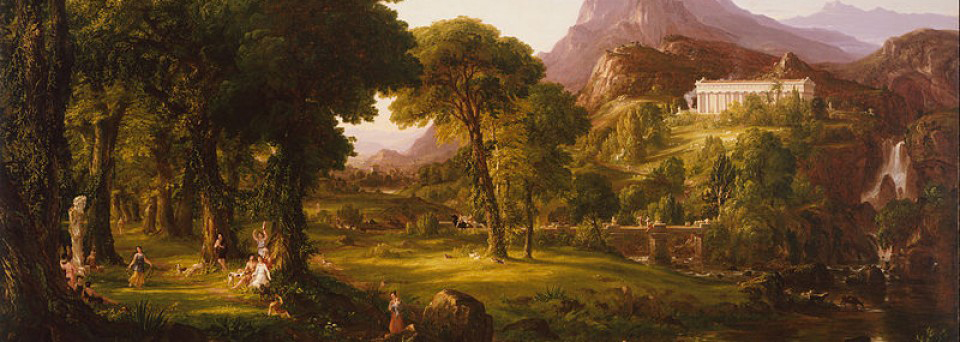
These ideas put forth by the Renaissance Humanists and Hermeticists —the prescriptions and observations about Man/Society, Nature and the Divine— would continue to influence others following in history. In Milan, Luca Pacioli, a Franciscan Friar and Mathmetician patronized by the Duke Ludovico Sforza, produced a book in collaboration with Leonardo entitled De Divina Proportione (The Divine Proportion, 1509), wherein he used the elemental attributions of the Platonic Solids to illustrate the relationship between God, the Microcosm of Man and Nature:
“just as God confers Being to Heavenly Virtue, by another name called Fifth Essence, and by its mediation, to the other four simple bodies, that is, to the four elements earth, water, air and fire, and, through these, to every other thing in nature”.
This would seem to slightly deviate from the threefold model— only until one remembers that in many traditions (and in the ancient Platonic sense) the four elements combined with the 5th (Aether, Quintessence or Spirit) is often equated as the symbol of Man’s illumination through refinement and balance of moral character or the soul. If we look to Empedocles for example, we can see an argument for how the four elements of Earth, Air, Water and Fire are considered as components not only found in the natural, physical world, but as components governing the various natures of Man as well. These ‘natures’ of man can be equated with later concepts of the Psyche, Soul or character of Man, and as Empedocles had also alluded to, Man typically leans towards one of the three elements more prevalent in his nature, but that near equal proportions produced an individual possessing of more clear perceptions and intelligence. [2]

Woodcut, French
Yet perhaps the most decisive, albeit asbtract, description of this threefold shcema can be found in the work of Giordano Bruno. In his De Triplici Minimo et Mensura (On the Triple Minimum and Measure), he lays out a cosmological description of reality wherein the same “measure” is used to define existence from the infinite to the most finite. The first “minimum” indicates the center of divine unity, above all and within all; a Monad. The second “minimum” is the mathematical or geometric point; the punctum. The third “minimum” is represented by physical atoms; the most irreducible form of matter. Through this cosmological structure of unity, it could be said that Bruno contended that the divine Monad, the mathematical Monad and the physical Monad were synonymous; and that a central point was shared by each “level” of existence. Furthermore, in Bruno’s cosmology, and in accordance with the famous Hermetic maxim (The one that says “God is an infinite sphere, the center of which is everywhere, the circumference nowhere”), he states:
“If the point doesn’t differ from the body, the center from the circumference, finitude from infinity, the maximum from the minimum, surely we may state that the universe consists of the center, or that the center of the universe is everywhere, and that the circumference is not in any part, although it is different from the center; or that the circumference is throughout all, but the center is not to be found inasmuch as it is different from that.”[3]
In this, Bruno’s contention of there being a central, Universal Union of existence with other inhabited and overlapping worlds, we might again see that the Divine nature of the Infinite can be found and located in the other regions of existence. Yet in this example, we go from the most irreducible component to the most Infinite, with the Divine Mind above, and the realm of man’s learning or intelligence in between. This is further suggested through the inclusion of three otherwise unexplained illustrations towards the end of Bruno’s De Triplici Minimo et Mensura, which are given the titles of the “Atria” of Minervae, Apollonis, & Veneris (Minerva, Apollo and Venus). These mythoglogical figures are often given the attributes of Mentis (Mind), Intellectus (Intellect), and Amoris (Love). [4]
To correlate these we might look to the following:
Wisdom/Minerva -or- Sophia = Divine
Higher Reason/Apollo = Microcosm
Love/Venus = Nature *
Bruno of course, through his system, leaned towards the role of Mathematics as being exemplary of this intermediary between the limitless Divine and Nature. And in this sense, it might be worthwhile to point out that in classical Greek, the root of word mathematics is mathema/mathemato, meaning “learning” or “that which is learnt”. It is undoubted that Bruno considered the agency of man’s intelligence to be more aligned with the Divine when it was also in alignment with Nature. His works would go on to have profound influence on practical science and in many ways his ideas such as “multiple, overlapping worlds” would even seem to foreshadow ideas found centuries later in Quantum theory.
Yet, even further back to where many of these ideas about the Threefold Nature of Universal Reformation found their likely origin, we turn back again to Plato’s Republic, written approximately in 318 BC. Those who are familiar with this Socratic dialog will remember that the work is concerned primarily with the order and character of the “just” City-State, and the “just” Man. Both are to be considered as both practical and allegoric representations of the harmony between the nature of the individual and of the collective City, or the Microcosm. In the Epilog of the Republic we see perhaps the most vital part used in this discussion. In this section, we see that the paradigm of the city is the idea of The Form of the Good, or the Agathon. Note that Plato considered this Form of the Good as a higher mental level akin to closeness with the Divine, as he considered this as a state making the “philosopher-in-training” advance to a “Philosopher-King”.
What we should be really looking for here is how, inside Plato’s description of the perfect City, we are faced with the Threefold Schema of the physical world (Nature), the world of forms which eventually gives rise to Society (Microcosm) , and the higher intellectual world of pure mind (The Divine). As many have pointed out, Plato is the one who also gives us some of the earliest divisions between Body, Mind and Soul. Thus within the Republic lies the blueprint which will inevitably end up in the hands of the Neo-Platonists and give us a Monad with 3 divisions into the Dyadic, the Triadic and Quadradic forms. Thus stemming from the higher world of “pure mind” aka “The Form of the Good”, The “just” Republic, and the “just” Man as individual, we again have union between the Divine and the finite world (Nature) with the City of the Microcosm in between.
But perhaps no better description of the Threefold division exists outside of Plato’s Allegory of the Cave. In this well-known story, which was used in the Republic to emphasize the value of education to that of the individual, we see the “unenlightened” people as those chained to the wall in a cave, seeing everything that passes as knowledge or learning only in the form of shadows being projected on the wall from a fire the can’t see behind them. Outside the cave, the “real” world exists, and one day, when the individual gets wise enough to break the bondage of their voluntary chain they can crawl out of the cave to reach the surface; and for the first time gaze upon the glory of divine Helios or Apollo shining down on the civilized reality never before known to exist.

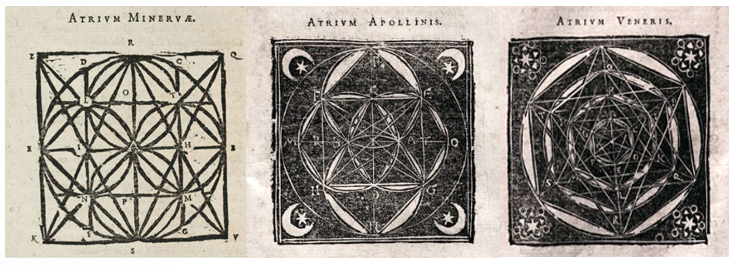


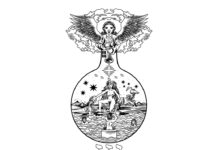
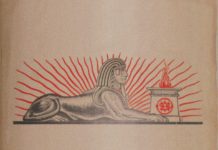







Lovely work bro and so great to have you here. Another great writer at Rosicrucian Tradition joins us today with this post who clearly has a great view on traditional aspects tying into the manifestos. Sam